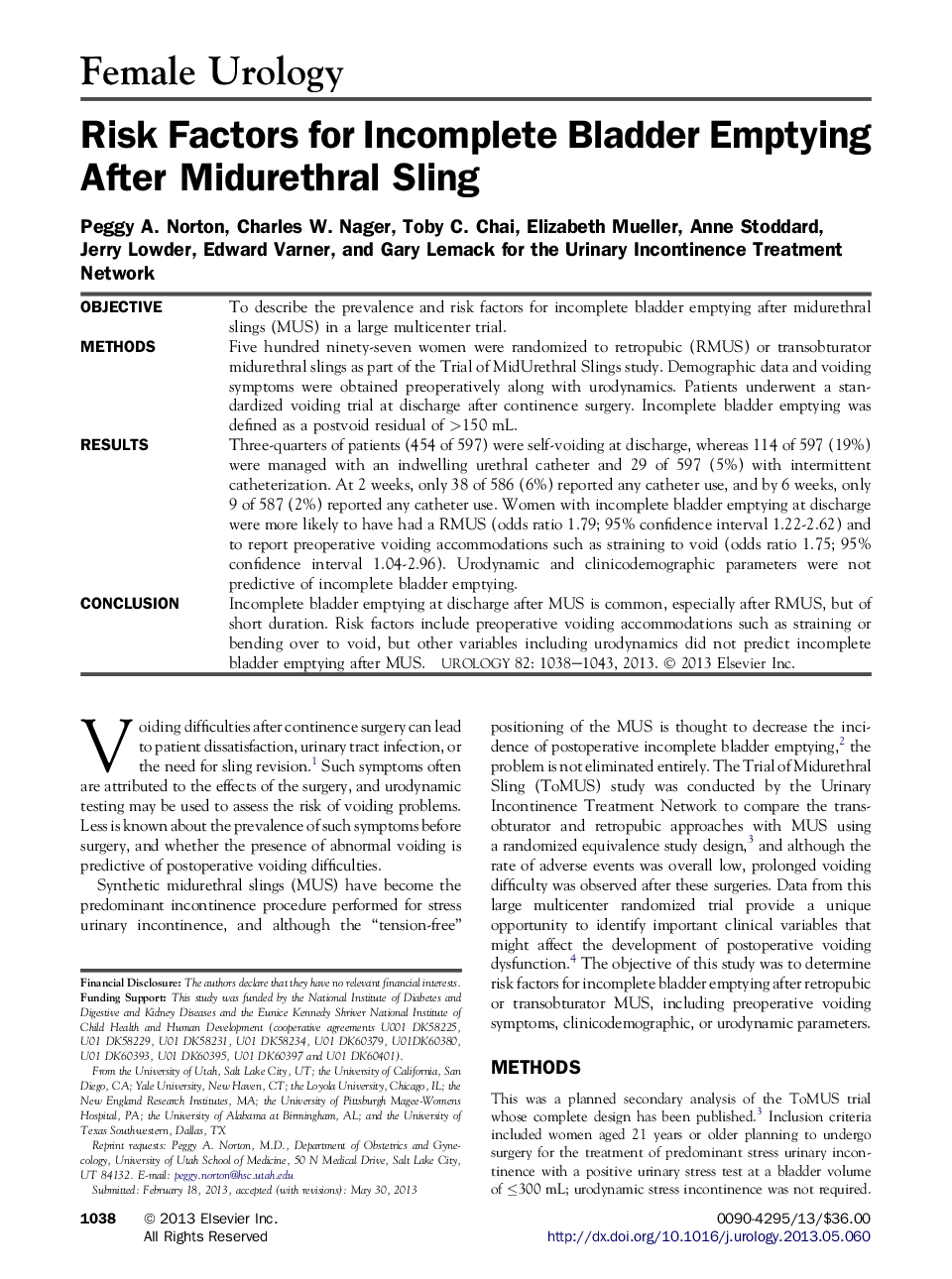| Article ID | Journal | Published Year | Pages | File Type |
|---|---|---|---|---|
| 3899215 | Urology | 2013 | 6 Pages |
ObjectiveTo describe the prevalence and risk factors for incomplete bladder emptying after midurethral slings (MUS) in a large multicenter trial.MethodsFive hundred ninety-seven women were randomized to retropubic (RMUS) or transobturator midurethral slings as part of the Trial of MidUrethral Slings study. Demographic data and voiding symptoms were obtained preoperatively along with urodynamics. Patients underwent a standardized voiding trial at discharge after continence surgery. Incomplete bladder emptying was defined as a postvoid residual of >150 mL.ResultsThree-quarters of patients (454 of 597) were self-voiding at discharge, whereas 114 of 597 (19%) were managed with an indwelling urethral catheter and 29 of 597 (5%) with intermittent catheterization. At 2 weeks, only 38 of 586 (6%) reported any catheter use, and by 6 weeks, only 9 of 587 (2%) reported any catheter use. Women with incomplete bladder emptying at discharge were more likely to have had a RMUS (odds ratio 1.79; 95% confidence interval 1.22-2.62) and to report preoperative voiding accommodations such as straining to void (odds ratio 1.75; 95% confidence interval 1.04-2.96). Urodynamic and clinicodemographic parameters were not predictive of incomplete bladder emptying.ConclusionIncomplete bladder emptying at discharge after MUS is common, especially after RMUS, but of short duration. Risk factors include preoperative voiding accommodations such as straining or bending over to void, but other variables including urodynamics did not predict incomplete bladder emptying after MUS.
